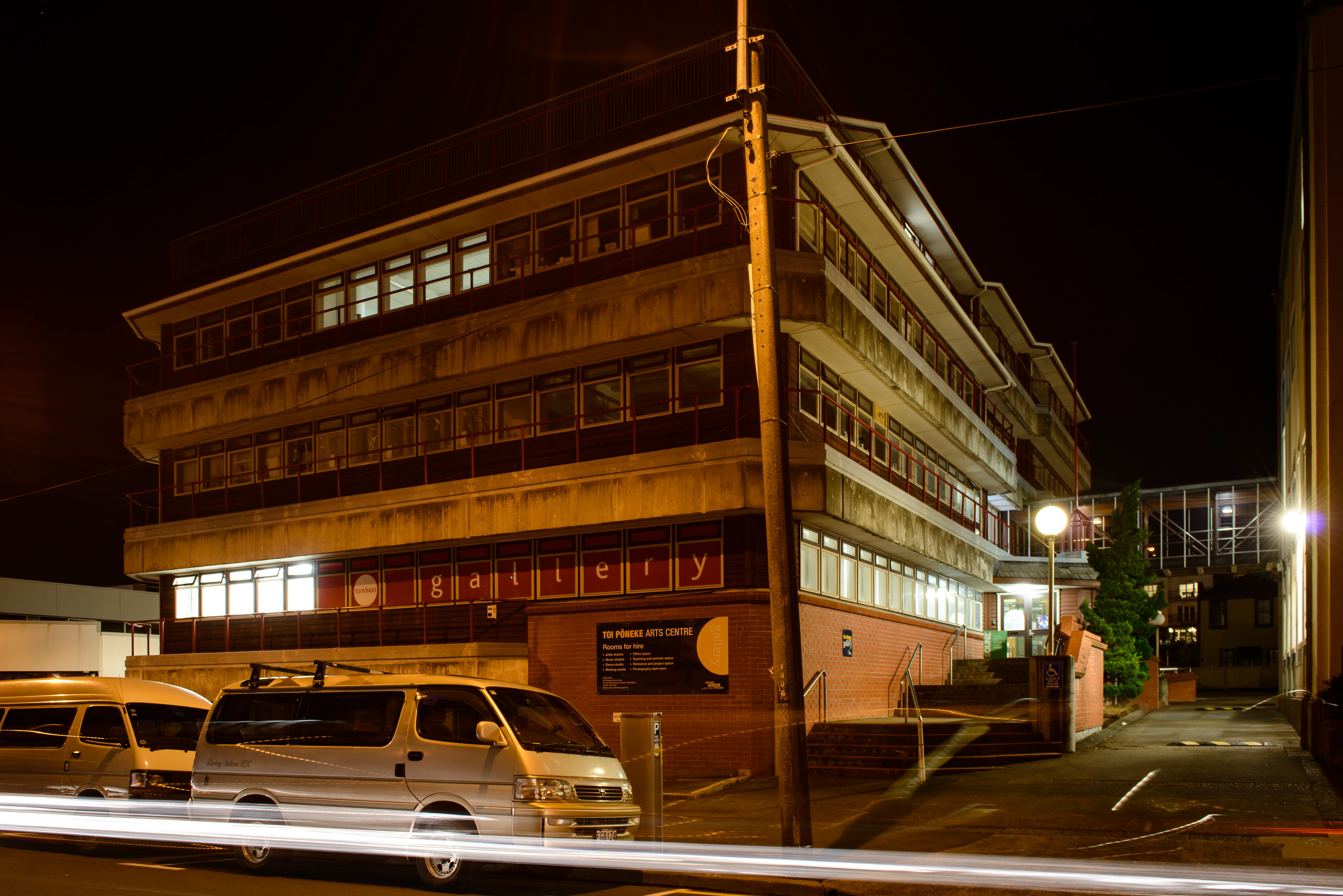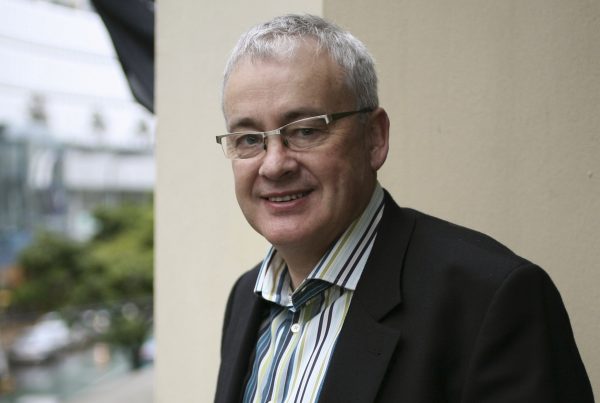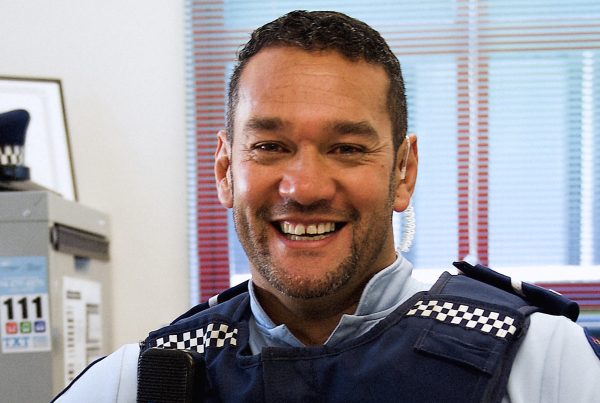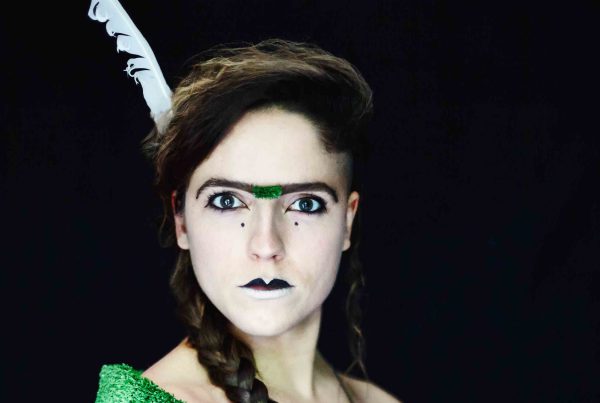

Take a bunch of creative people, add the vibe of upper Cuba Street, and the result is an energetic hub of creativity. A Wellington City Council initiative to encompass the talent of our creative city, Toi Pōneke is an open space aiming to help develop and hone creative practices in groups and individuals. The support the centre offers people involved in the arts is one of the things that makes Toi Pōneke so exciting.
Manager Paora Allen has been in charge of Toi Pōneke for two-and-a-half years, and he’s a familiar face there. As we walk around the centre together, the community vibe is clear, as he greets everyone who passes by name and knows their profession.
Toi Pōneke has 28 permanent artists’ studios. The 29th is reserved for people wanting a temporary studio — the space can be rented for days or weeks at a time. There are also three acoustically treated music studios, which are often hired out as rehearsal spaces by local bands. Large, multi-purpose rooms, a fully equipped dance studio and the ‘hub’, a shared space at Toi Pōneke’s entrance for all residents and visitors to enjoy, and the tour of Toi Pōneke is complete.
Toi Pōneke places special emphasis on supporting up-and-coming artists as they find their feet in the industry. The aim is to create an environment that supports innovation and encourages artists to work together. It is the supportive nature of Toi Pōneke that performs an important role in the transition from art school student to practising artist.
In a joint venture with the centre, Whitireia Polytechnic sponsors a graduate student to have an art studio at Toi Pōneke for 11 months, with the centre putting on an end-of-residence exhibition to showcase their work. This year, multidisciplinary artist Natalie Smith has occupied Studio 10. After graduating with a Bachelor of Applied Arts, she says the residency has been a chance for her to explore art even further.
“When I studied, I kept my options open and initially started with painting, then I started printmaking and eventually moved on to some object making in my last year.” The focus of her residency was to look at installation art. “My current body of work is looking at the idea of a dystopian society. It’s influenced by science fiction and looks at environment and nuclear disasters.”
Heavy-duty topics need heavy-duty materials, and Natalie says most of her materials come straight from hardware stores.
“I’ve been making hand-made nets, which are very time-consuming. I also use a lot of rope and string, even fishhooks. There’s polyurethane and lots of enamel paints — they’re raw materials.”
The residency has allowed Natalie to work on her art full time, something she has always wanted. “It’s been a really great bridge from leaving study and going into being a full time practising artist. Paora and everyone here are so supportive and are around if you want feedback. It’s made finishing art school not so freaky.
Just next door, in Studio 9, abstract artist David Brown is an old hand at Toi Pōneke. He first moved into a studio space at the centre in 2008, where he worked for three years before moving out to study at Massey University. After completing his Masters in Fine Arts, David returned to a studio once more — even though he never quite said goodbye to the centre.
“When I was studying, I worked downstairs at reception, so I’ve actually never left over the last six years. I still work the reception part time.” Hailing from Tauranga, and with a background in archaeology, David believes that Toi Pōneke embodies the Wellington art scene. “I moved to Wellington to engage in the arts community and Toi Pōneke offered me that — I was able to meet other artists who were interacting with the Wellington art scene and it enabled me to create a friend base.”
David says the community vibe of artists is a network for the people sharing the space; there is a help-each-other-out attitude among the residents. “Seeing other people having success can inspire you in your own work: it shows you that it’s possible.”
While studying at Massey, David began to think about what he wanted his art practice to mean. His current body of work has roots in his feelings about animal rights. His media are painting and installation work, and he’s currently exploring three-dimensional ideas. He brings this theme into his abstract work, basing compositional structure on chicken wire; using tail paint (used to mark sheep and cattle); and using leg and tail tape (used to control animals when moving them around for pasture or slaughter).
“Your art is never really disconnected from yourself, so I wanted to find an issue that was personal to me.” The animal lover is now six months out of university and plans to stay at Toi Pōneke for at least the near future. “It ticks all the boxes so far — it’s close to home and I’ve got a lot of friends here. It’s a good place to be.”
Upstairs, Studio 16 has been home to artist Pam Brabants for just over two years. Returning to Wellington after living in the UK for 18 years, where she studied at the Chelsea College of Art in London, Pam secured a studio at Toi Pōneke in less than a month. “It was great for me because I hadn’t lived in New Zealand for a long time and it felt like it put me in the centre of things.
“Something I like about it most of all is that you have privacy if you want to keep your door shut, but you can still be in contact with other artists if you want to.”
Her pencil drawings are incredibly intricate and time-consuming, and she says having feedback from another artist can be really helpful. “There is the professional side where we can bounce ideas off each other, but there is also the social aspect of working as part of a community.”
Pam has had other studios previously, in the UK, and says she has never come across somewhere quite like Toi Pōneke. “This area of Wellington has a reputation for the arts. There are a lot of smaller galleries and dealer galleries around here, which benefit a place like this.”
Pam’s studio is bright and full of colour. Various knick-knacks line the shelves, which strike something of a contrast to her monochrome drawings. “I use the language of comics; I do small comic works and then also large pieces that take months to do.” Her smaller works include The Amazing BraPants! series — she is currently working on a third issue of the quirky comic. “It’s a play on my last name. I used to get called it at school, but I’ve turned it around on the bullies!
“The comic work highlights ordinary life and the power of ordinary things. People say to you, ‘Oh, I’ve lived a boring life, I haven’t done anything’, but everyone has a story, and it’s often those stories or secrets that I am quite interested in.”
Throughout her work, the human form has been an underlying theme. One of her current projects is a series of horizontal figures, which she bases on existing artwork with a twist of her own interpretation.
Pam says a centre like Toi Pōneke can give artists without galleries a sense of credibility. “Because I don’t have a gallery, it’s great having this studio space. People take my work more seriously because Toi Pōneke has such a good reputation.”
Not just a space for private studios, Toi Pōneke also houses a number of organisations that are busy in the arts sector.
Creative Capital Arts Trust (CCAT) has a studio on the top floor of the centre’s second building (the heritage-listed original Education Board building, constructed in 1939). They are the brains behind the New Zealand Fringe Festival and next year’s inaugural CubaDupa — a reinvention of the Cuba Street Carnival.
Manager Emma Giesen says Toi Pōneke suits the trust’s needs very well. “It’s great for us because for both our festivals, we need to be as accessible as we can to the arts community. We really need a place where people can find us easily and feel like they can pop in any time.”
CCAT has had its office in Toi Pōneke since the trust was set up in 2011. Emma says it is an inspiring place to work. “It’s quite a gorgeous big space, which is unusual for the centre. We’ve got windows along two walls, so there’s always light and sun, and it’s always warm — we love it.”
Toi Pōneke has a variety of shared spaces that residents can enjoy, something that works well for CCAT. “The extra facilities here are great. We hold free workshops in the hub for Fringe artists, people participating in the festival. Because it’s free for us, we can make the workshops free for everyone else.
“The location of Toi Pōneke is perfect for us too — it’s right in the heart of things, and one of our festivals is on Cuba Street, which is so close.”
Emma says it is important to have a place where there are the facilities for lots of people to be in one building, because it sparks creative networks. “We have recently been talking with the Community Music Junction and DANZ [Dance Aotearoa New Zealand, who are also at Toi Pōneke] about ideas for projects we could do together. Everyone is all head down so it’s not like we hang out during the day — but it is good to know the people around you and you can talk about things together.”
Talking about the upcoming CubaDupa, Emma says to expect the unexpected. “It’s shaping up to be really exciting at the moment. We’ve put an open call for proposals from people and we’re looking for as much exciting and interactive, immersive performances and events as we can.
“It’ll be a weekend of exploring this precinct of the city and coming across things you won’t have seen or experienced before.”
Anyone interested in renting space at Toi Pōneke for short or long terms should email artscentre@wcc.govt.nz or telephone (04) 385 1929. You can find out more about the centre, exhibitions and facilities at wellington.govt.nz/services/community-and-culture/arts/toi-poneke-arts-centre










